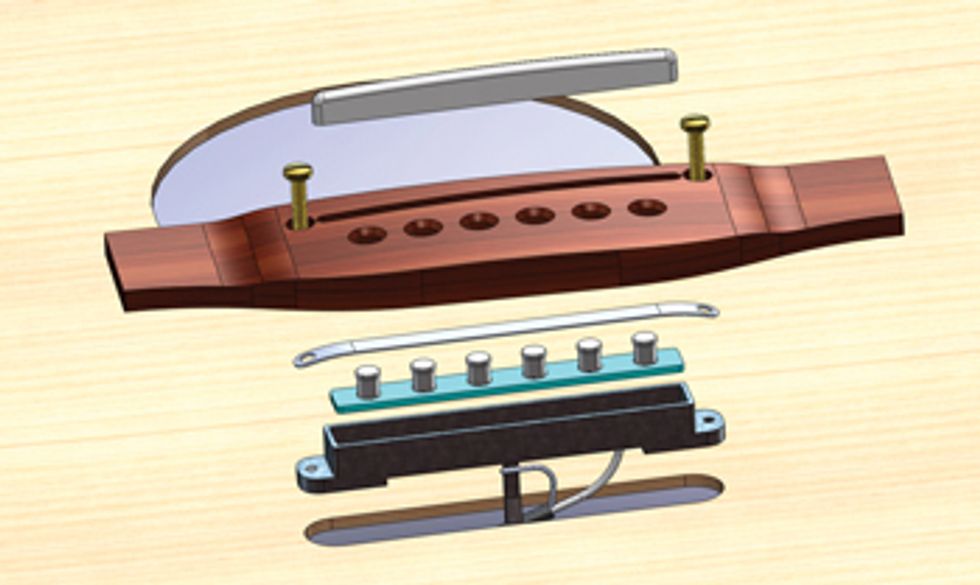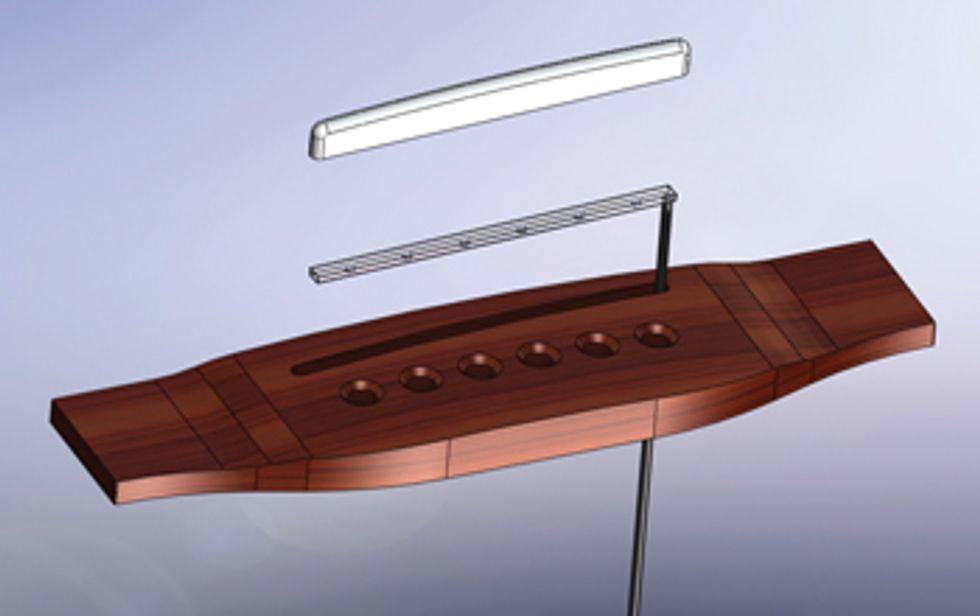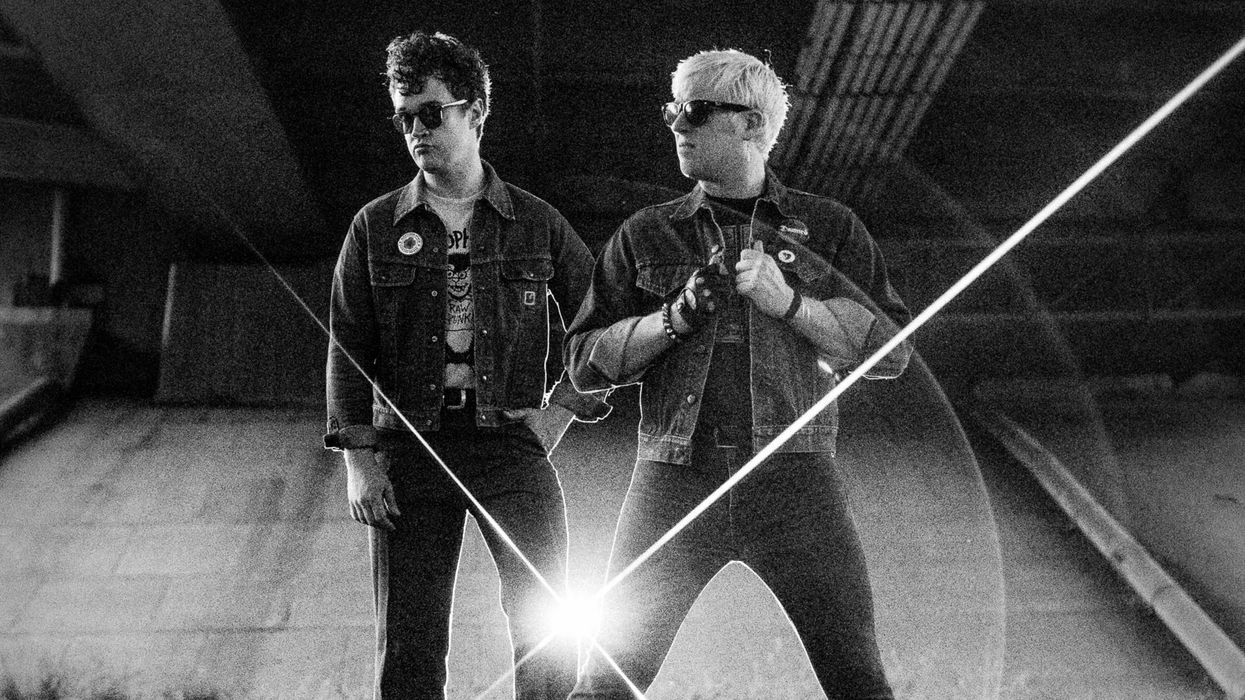
Fig. 1. With its large ceramic elements and innovative carrier design, the Takamine Palathetic pickup installed in their PT-007S was the answer for touring guitarists in the late ’70s looking for a hassle-free acoustic without feedback issues.

Fig. 2. Conventional undersaddle pickups have relatively small piezo-ceramic elements that are sandwiched between the bottom of the saddle slot and the bottom of the saddle.
In my last column [“Saddle Up, Amigo,”October 2012] we talked about some of the early pioneers in the development of amplified acoustic instruments. This month, let’s dig into the inner workings of the Takamine PT-007S, one of the earliest—and most successfully integrated—amplified acoustic guitars.
Takamine first introduced the PT-007S in 1979, and the model was an instant success, especially among touring guitarists playing in the bigger country groups out of Nashville. Factory equipped with Takamine’s new Palathetic pickup and an onboard, battery-powered preamp/EQ, the guitar was a no-hassle, plug-and-play acoustic that could perform onstage at high volumes without feedback.
Taking a closer look at the design of the pickup in Fig. 1 will help us understand why this guitar was able to perform so well onstage in a high-volume setting. Like conventional undersaddle designs, the Takamine pickup employs six individual piezo-ceramic elements. This, however, is where the similarity ends.
In more conventional undersaddle pickups used by most manufacturers (Fig. 2), the ceramic elements are quite small. Located directly under the saddle in a normal bridge slot that has been deepened to accommodate the height of the pickup, the ceramic elements are sandwiched between the bottom of the saddle slot and the bottom of the saddle. The saddle is not glued in or press fitted, but rather, allowed to slide in the slot. As the strings vibrate, the saddle acts like a piston and transfers the resulting change in force directly to the sensor.
With the Takamine design, one of the first things we notice is the very large size of the ceramic elements, compared to more conventional designs, as well as the large die-cast metal carrier that holds the elements. This carrier aligns the elements with the strings and is attached to the bridge plate with screws that engage a metal strap, which is located in the saddle slot directly under the saddle. The cylindrical elements are allowed to pass through holes that are drilled through the bridge plate, soundboard, and bridge, and they are sandwiched between the die-cast carrier and the metal strap. This larger design, according to Takamine, offers up to 12 times the element mass of a typical undersaddle pickup.
Before we continue, let’s review some fundamental principles of operation for piezo ceramics. This will provide a better understanding of why these unique design elements play such a large role in the ability of Takamine’s acoustic/electric guitars to perform at high volumes without feeding back.
Piezo transducers are like any normal capacitor where two conductive surfaces are separated by an insulating material. In the special case of piezoelectric materials, the insulating dielectric material will generate a charge when subjected to mechanical strain. This mechanical strain occurs when the piezo material is deformed by being in intimate contact with a vibrating material. And the efficiency of the transfer of these changes in force, created by the vibrating body, is greatly influenced by several factors.
In some designs, the sensor becomes an accelerometer when it is simply glued to the face of the vibrating surface and is loaded with a mass. Without the mass load, and if the piezo element is thin enough, the element becomes a bending mode sensor, such as a typical bridge-plate transducer.
With Takamine’s pickup, however, the sensor is a compression-mode force sensor. This means that the sensor is excited by the compression forces created by the piston action of the saddle, which squeezes the sensor against the die-cast holder.
One factor that greatly determines the output character of a transducer is the nature of the material that directly contacts the sensor. Sound is a vibration of kinetic energy, passed from molecule to molecule within a material. And every material that transfers vibration is a mechanical filter. The unique, elastic properties and the density of these materials have a significant effect on the manner in which sound propagates through them.
In the course of my design work, I have found that the size of the sensor elements is influential in determining the sound factor as well. It’s like a salad: Add a little onion and it brings some flavor to the other ingredients. Add a lot of onion and it becomes an onion salad. In pickup design, if the sensor is relatively small and is in direct contact with the wood itself, the resulting output of the sensor is dominated by the resonant characteristics of the wood. On the other hand, if the sensor is relatively large and is separated from the wood by non-wood materials, the resonant characteristics of the sensor and the other materials become dominant.
Let’s put this all together: In the case of the Takamine design, the vibrating strings create a changing force on the saddle, which efficiently transfers this force through a thin, metal plate—directly at one end of the massive ceramic element that is supported on the other end by an equally massive die-cast support structure. Although the ceramic elements pass through holes in the bridge plate, top, and bridge, the coupling to the top (which is highly resonant and the source of feedback when interacting with a sound reinforcement system) is minimal. The downside of this design is that the amplified sound— though very stable and predictable—is somewhat less complex and acoustic than it would be if the sensor coupled more intimately with the wooden structure of the instrument.
Taken as a whole, this early example of a fully integrated, acoustic/electric instrument was a resounding success. The combination of a heavily braced top, a decoupled piezo-bridge pickup, and a fully integrated onboard preamp were exactly the right elements in making the PT-007S such a great working tool for high-volume stage environments.
Hats off to Takamine for their early innovation and a job well done!
 Larry Fishman holds more than 30
patents in transducer and musical
instrument design. He is president
and founder of Fishman Transducers,
which he began in his garage in 1981.
In the early ’90s, he also co-founded
and managed Parker Guitars (which
was later sold to U.S. Music Corp.) with his friend
Ken Parker.
Larry Fishman holds more than 30
patents in transducer and musical
instrument design. He is president
and founder of Fishman Transducers,
which he began in his garage in 1981.
In the early ’90s, he also co-founded
and managed Parker Guitars (which
was later sold to U.S. Music Corp.) with his friend
Ken Parker.

















